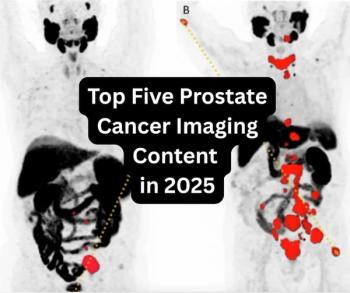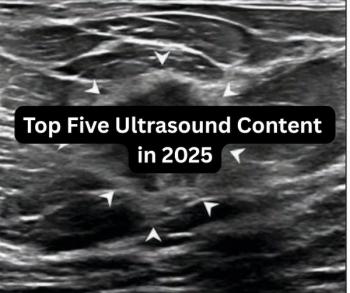
Women’s Preventive Imaging: A 3-Pronged Strategy for Improving Access
An effective strategy requires participation by public health advocates, legislators, providers, vendors, and the media.
Every two minutes a woman in the United States is diagnosed with breast cancer. In fact,
Yet, only about
However, there is also a much deeper problem: lack of access. Across the nation, there are far too many women who continue to miss out on preventive imaging like mammography due to cost, lack of insurance, and/or living in a medically underserved community.
In addition,
Reaching this goal necessitates a three-pronged strategy to improve access to mammography and digital breast tomosynthesis (DBT) for women from every corner of the country, and every walk of life. The strategy requires the dedicated participation and collaboration of multiple stakeholders—public health advocates, legislators, providers, vendors, and the media.
Advocacy
The first step is ongoing advocacy efforts on behalf of women’s health rights. Time and again, we have witnessed the power of “grass roots” community advocates as well as those who push for change on Capitol Hill. Public health advocates challenge the social, political, and economic systems that perpetuate disparities in women’s healthcare. They help bring about positive reforms, including expanding access to preventive imaging for more women.
Related Content:
Legislation is critical, and we have already made significant strides. For example, The Affordable Care Act (ACA) set a new precedent by providing women—for the first time—with assurance to breast cancer screening. The ACA requires that Medicare and all private health insurance plans fully cover screening mammograms without any out-of-pocket expense for patients. It was an enormous “win” for women, yet the ACA does not solve the screening problem for the many women who remain uninsured.
Breast density legislation is another area where we’ve seen progress, thanks to groups, such as
After a decade of advocates initiated by the late Nancy Cappello pushing for legislation, in late March of this year the Department of Health and Human Services announced changes to the Mammography Quality Standards Act (MQSA). The changes mandate that mammography reports include reporting of dense breast tissue to the patient. This is critical because dense breast tissue can potentially mask cancers, making them hard to spot on a mammogram. Now, women who are notified that they have dense breast tissue can discuss it with their physician and determine whether they undergo additional testing to look for hidden cancers.
For example, DBT is engineered to help radiologists better detect cancers on women with dense breast tissue. This modality—a 3D mammogram—can be used for annual screenings on any woman, but is especially helpful for women with dense breast tissue.
Stakeholders need to find ways of extending to more women access to new standards of care, such as DBT.
Research published in
Related Content:
Advocacy efforts can help drive expanded access to DBT. There has been some progress for select groups. In December 2020, Congress voted to pass a new defense bill that would extend U.S. military service members and veterans permanent access to advanced breast screening. The 2021 National Defense Authorization Act (NDAA) mandates that Tricare beneficiaries receive permanent coverage for DBT.
We’ve made strides, but continued advocacy initiatives and a push for new and better legislation remain paramount. We must give voice to women in less privileged positions, so that they, too, gain access to the best possible care.
Education
Increasing access also requires building awareness through education aimed at three key groups: the public, referring physicians, and radiologists.
Reaching women with the message that annual screenings can save lives is critical. There are multiple ways healthcare providers can help spread this message, whether they serve an affluent or an economically challenged community.Physicians can use their websites, social media, and community health fairs to educate women about the importance of compliance with annual screening and the benefits of early detection of breast cancer.
Vendors can help, too, by collaborating on events and programs with hospitals or imaging facilities, or sponsoring their own events for women.
For example, Fujifilm has a tradition of sponsoring an employee breast cancer walk that also includes a session about the importance of screening and understanding breast density.A representative from the Are You Dense organization teams up with Fujifilm to give the educational talk. In addition, Fujifilm has held several special events for breast cancer survivors. Programs like these not only help inform attendees but also often generate local media coverage, helping to spread the message about the value of screening with even more women.
While women are a primary audience, referring physicians require education, too. Primary care physicians and OBGYNs are often the only doctor a woman sees for an entire year. These clinicians need to stay current on new imaging technologies, issues like breast density, and the latest research. And, of course the patient benefits in detecting cancers earlier and advances in exam comfort.
Breast imagers can play a key role in keeping referring physicians informed through simple emails urging doctors to remind patients to get their annual screening. More sophisticated communications might include creating a breast cancer newsletter, special event, and/or webinars.
Finally, even radiologists need ongoing education. Women’s imaging is a constantly evolving field, and it’s critical to stay current. Vendors can play a significant role in the education process at industry meetings, for example. Here, they can sponsor programs, partnering with breast imaging experts who can discuss the latest research and demonstrate the latest technology.
Another avenue is vendor-sponsored online CME courses aimed at radiologists. For example, Fujifilm recently teamed up with a recognized radiology media outlet to offer a series of CME courses that covered the latest topics like “Implementing DBT into Your Practice,” “DBT, Breast Density and Artificial Intelligence,” and, “A Clinical Review: Benefits of Tomosynthesis in Daily Practice.”
Screenings
The third step in the strategy is increasing the availability and affordability of mammography and/or DBT screenings.
Screening mammography is the most effective tool for detecting breast cancer in its early stages, yet many women from medically underserved communities do not have adequate access.
A
Findings from the 10 studies examined in this review suggest that mobile mammography programs do reach underserved women. Most women using mobile mammography lacked insurance and were from racial/ethnic minority backgrounds (mainly African Americans and Hispanic) and low-income households.
Several cancer centers, imaging facilities, and hospitals throughout the nation offer free screenings via mobile mammography units.
In addition, both the National Mammography Program and the CDC’s National Breast and Cervical Cancer Early Detection Program offer mammography services for low-income, uninsured, and underserved women. These organizations match up women with a provider facility in their area, ensuring free mammograms and diagnostic services for those most in need.
Manufacturers, too, are doing their part. Fujifilm’s
Since its inception in 2019, the ASPIRE mobile coach—which is equipped with
Women also visit the ASPIRE Coach, which also often makes stops in locations near Breast Cancer Walks and events. While on-site screenings are not presently part of the initiative, women tour the coach, learn about the importance of annual screenings and early detection, and are offered educational materials. The ASPIRE mobile coach is one more way of reaching underserved communities with a life-saving message about the importance of annual mammograms.
Moving Forward
Breast cancer is the most common cancer diagnosed among U.S. women and is the second leading cause of death among women after lung cancer. Simply put, breast cancer is a beast—but it’s one we have the power to conquer.
Here’s the good news: there are more than 3.5 million breast cancer survivors in the United States. That’s a statistic we can all help grow.
Stakeholders, working in concert and independently to improve access to screening, can help boost that number significantly. The earlier we catch cancers, the greater the chances for women to get effective treatment and ultimately, lead healthy, rewarding lives.
For more coverage based on industry expert insights and research, subscribe to the Diagnostic Imaging e-Newsletter
Newsletter
Stay at the forefront of radiology with the Diagnostic Imaging newsletter, delivering the latest news, clinical insights, and imaging advancements for today’s radiologists.




























